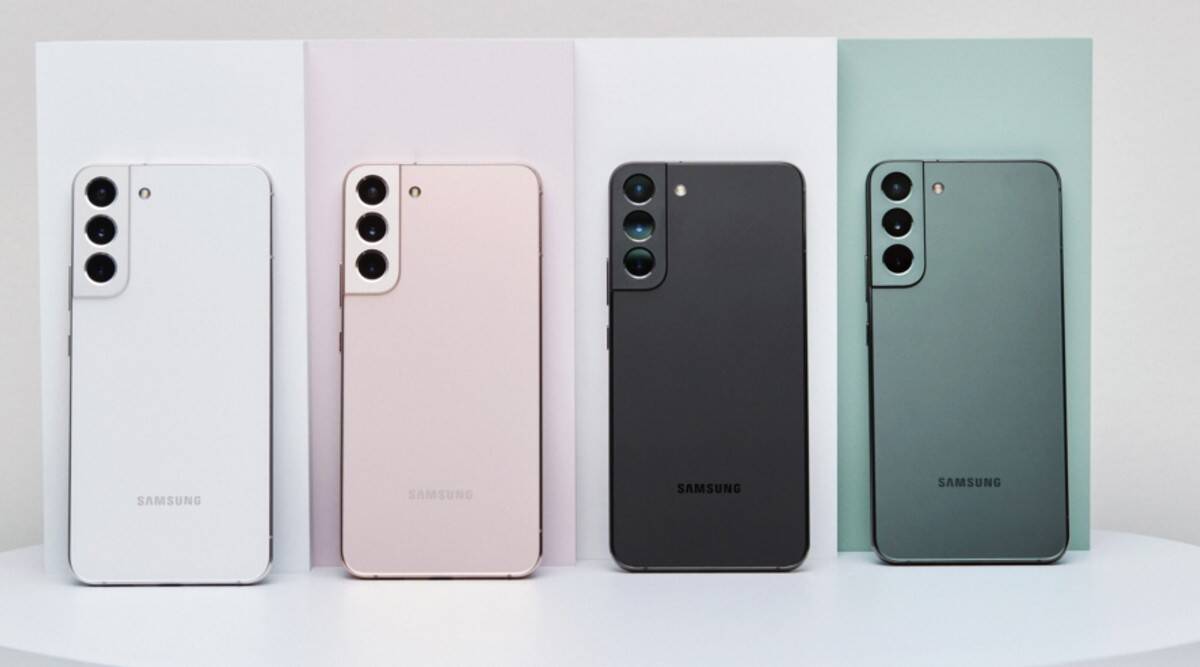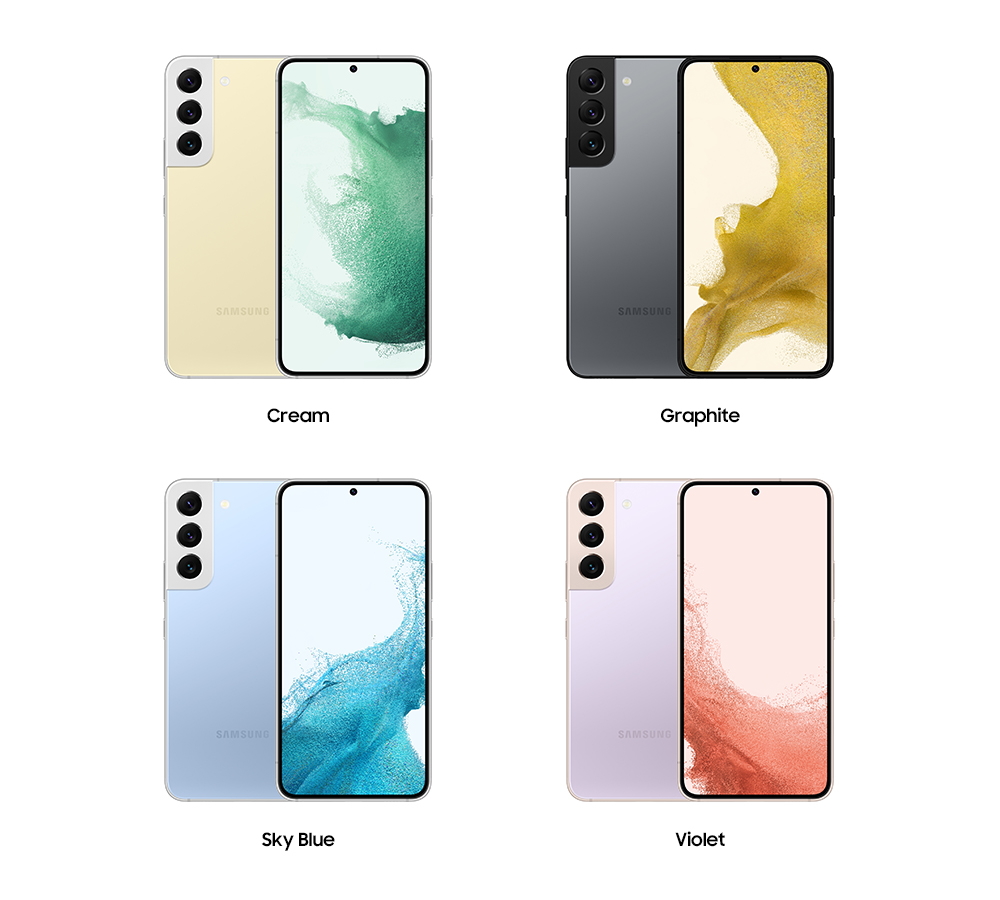Samsung has just unveiled the newest Samsung Galaxy S22 series, which boasts enhanced camera functions, a faster processor chip, and maybe spells the end of the Samsung Note lineup.
Here’s everything you need to know about the new smartphone series.
S22 Series Available from 4 March, Pre-Order Collections Start 25 February
The Galaxy S22 will be priced from S$1,178, the S22 Plus from S$1,468 and the S22 Ultra from S$1,718. Yes, the most expensive model is nearly $2,000.
Samsung said that the series will be widely available starting 25 February. For us Singaporeans, the phone will be available starting from 4 March.
However, if you’ve pre-ordered the phones through selected online stores, you can collect and flaunt your device from 25 February, a week before the official launch.
New Colours and Use of Recycled Materials In Phone
An updated range of colours includes Phantom White, Pink Gold, Phantom Black, and Green.

If you order online, there are also online-exclusive colours like Cream, Graphite, Sky Blue and Violet.

Samsung has also used a new material created from recycled fishnets to make the phone’s key bracket. Post-consumer recycled material is also used in the S22’s speaker module and side buttons.

The new series also features flat displays made from Gorilla Glass Victus+. At 6.1 and 6.6 inches respectively, the S22 and S22+ have slightly smaller screens than their predecessors.
And no, none of the S22s has a headphone jack or an SD card reader. These are fossils left in the past now.
Upgrades in Processors
For those looking to get into the nitty-gritty details, I got your back.
The S22 and S22+ features a FHD+ screen that still tops out at 120HZ, but the lower limit of their refresh rates are down from 10Hz to just 1Hz. This means that the phone can save on power even more.
The phones also got brightness upgrades, with the S22 capable of hitting 1,300 nits in direct sunlight, while the S22+ and Ultra peak at 1,750 nits.
Samsung also introduced the new Vision Booster feature, which is exactly what it sounds like: it uses ambient light sensors in the phone to adjust screen settings. By automatically adjusting contrast and colour saturation, it makes content easier to see in both outdoors and low-light environments.
The S22 and S22+ also feature 8GB of RAM and either 128 or 256GB of storage.
The S22 has 25-watt wired charging, a 3,700 mAh battery and Wi-Fi 6. Meanwhile, the S22+ gets 45-watt wired charging, a 4,500 mAh battery, slightly faster Wi-Fi 6E, and Ultra WideBand (UWB) communications. (BTW, the S22 Ultra also has faster Wi-Fi 6E and UWB communications.)
Other than these differences, all models feature 5G, 15-watt wireless charging, ultrasonic in-screen fingerprint readers and IP 68 dust and water resistance. They also feature Qualcomm’s 4nm Snapdragon 8 Gen 1 chip.
The S22 and S22+ also feature cameras of the same resolution: and that has gotten a major upgrade too.
Enhanced Camera Qualities, Like Better “Nightography”
The most important camera upgrade is the S22 and S22+’s new 50 MP wide-angle camera. Samsung claims that this camera features pixels that are 23% larger than before, to draw in more light in dark environments.
The camera also uses a four-to-one pixel binning technique that combines four adjacent pixels into one big pixel for additional low-light sensitivity. You’ll be sure to get the crispest night shots with this upgrade.
Want to capture better videos? Samsung added a new Auto Framing feature that can track up to 10 subjects at the same time, to adjust the focus and framing. There’s also a new Advanced OIS to help minimise bumps or shaking hands.
If you’re more of a portraits person, the new series also has a new AI Stereo Depth Map process, which helps to distinguish the difference between your subject and the background more easily.
And for the pet-lovers, Samsung’s Portrait Mode now works on pets too!
Join our Telegram channel for more entertaining and informative articles at https://t.me/goodyfeedsg or download the Goody Feed app here: https://goodyfeed.com/app/
Software Upgrades Aplenty
The S22s come loaded with One UI 4.0 based on Android 12, meaning you’ll get all the recent security upgrades from Google. Notifications, when apps use the phone’s mic or cameras, will be implemented.
There’s also the new Privacy Dashboard, extra home screen customization options and more in this UI.
For more secure and easier storing of stuff like digital IDs, credit card information and travel documents, the Samsung Wallet is here to save the day. There’s even a new live-sharing feature in Google Duo, that lets S22 users stream videos to other people on the call.
Not saying that they’re ripping off Apple’s SharePlay feature in iOS 15, but it is rather similar.
OK, so that’s all the major upgrades that every model in the S22 series has. But what separates the S22, S22+ and S22 Ultra from each other?
S22 Ultra’s Key Differences From S22 and S22+
The 6.8-inch S22 Ultra, being the most expensive, has everything the cheaper models have, but with some better specs.
The biggest difference? It has a built-in S-Pen stylus like the Samsung Galaxy Note series.
While the other two models have a 1080×2340 resolution, the Ultra features a better 1440×3088 resolution instead. It also has a greater battery capacity of 5,000mAh and offers a maximum of 12GB of RAM and up to 1TB of storage.
The S22 and S22+ has 50MP (f/1.8) wide, 12MP (f/2.2) ultrawide, 10MP (f/2.4) telephoto rear cameras. Meanwhile, the S22 Ultra has 108MP (f/2.2) wide, 12MP (f/2.2) ultrawide, 10MP (f2.4 / f4.9) telephoto rear cameras.
The other two models have 10MP front cameras, while the Ultra features a 40MP front camera. The front and rear video specs are the same across the three models though, with front video at 4K and 60fps, while the rear video is either at 8K and 24fps, or 4K at 60 fps.
You can check out and pre-order the S22, S22+ and S22 Ultra on Samsung’s official website, or visit selected stores like Singtel or StarHub.
Read Also:
- KFC Launches ‘Turkey Baconized Zinger’, a Burger With 7 Layers of Calories
- Managers Caught Making Sexual Comments & Wanted to Engage An Admin Based on Looks
- Lawrence Wong Drops a Video Explaining Why There’s a Need to Increase GST
- Russian Olympian in Quarantine Said the Meals Provided Were ‘Impossible’ to Eat
Image: Samsung Singapore




